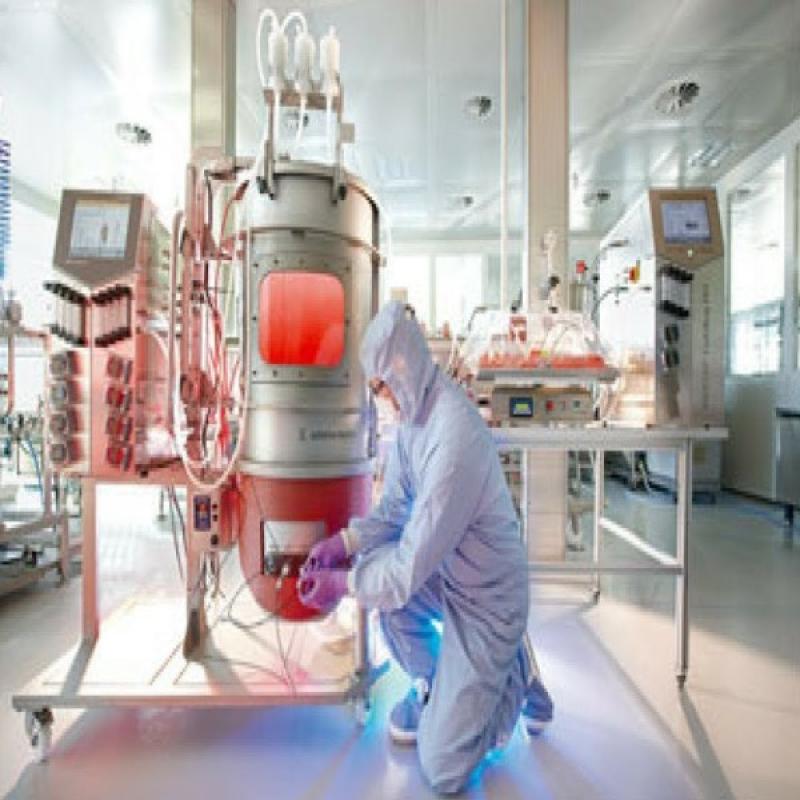Bioprocess containers are utilized extensively in the biopharmaceutical industry for the growth and containment of living cells and microorganisms involved in the production of biologics such as vaccines, insulin, monoclonal antibodies etc. These containers are specially designed to provide optimal growing conditions for cells and microbes while maintaining strict sterility to prevent any contamination. Let's take a closer look at the key types and applications of bioprocess containers.
Stainless Steel Bioreactors
One of the most commonly utilized types of Bioprocess Containers are stainless steel bioreactors. They are usually large in size with working volumes ranging from 100 liters to 50,000 liters. Stainless steel bioreactors offer robustness and durability required for industrial-scale production of biologics. Some key features of stainless steel bioreactors include mechanical agitation and stirring systems, temperature and pH control probes, sample ports, and filters for gas inlets and outlets. They find widespread applications in fed-batch and perfusion processes involving microbial fermentation and cell culture. Advanced digital control systems precisely monitor and regulate various process parameters inside stainless steel bioreactors.
Single-Use Bioreactors
In recent years, single-use or disposable bioreactors have gained significant popularity in the biopharma industry. Made of flexible plastic film of polyethylene or polyvinylidene fluoride, these single-use bags provide a more cost-effective and scalable alternative to stainless steel bioreactors. With working volumes ranging from 10 liters to 2,000 liters, single-use bioreactors eliminate the need for cleaning and sterilization of equipment between batches. This helps speed up product development and facilitates changes in production scales. Some advanced single-use bioreactor models even offer online process monitoring and automated control of parameters like pH, DO, and temperature. Areas where single-use bioreactors are gaining ground include cell culture, microbial production, and vaccine manufacture.
Wave Bags and Hollow Fiber Bioreactors
Two specialized types of single-use bioprocess containers are wave bags and hollow fiber bioreactors. Wave bags are flexible plastic bags with several inverted spouts or pockets designed to promote gas-liquid mixing through wrinkling motion induced by external rocking platforms or waves. They find use in cultivation of adherent cell types. Hollow fiber bioreactors contain semipermeable hollow fiber membrane bundles through which nutrients and waste can pass during cell growth. Oxygenation occurs via fibers while cells are retained inside. Such compact systems are suited for monoclonal antibody production through high cell-density perfusion processes.
Lab-scale Bioreactors
At the research and development scale, specialized benchtop and miniature bioreactors in size of microwells, 96-well plates, and 24-well roller bottles serve as important bioprocess containers. Models with working volumes ranging from milliliters to 10 liters help scientists and engineers develop and optimize upstream and downstream bioprocesses at the lab scale. These small-size bioreactors are usually made of glass or plastic with limited process control capabilities. However, they facilitate high-throughput screening of cell lines, growth conditions, and process parameters. Areas of application include process development, clone selection, and metabolic flux analysis.
Accessories and Auxiliary Equipment
In order to facilitate optimal growth of microorganisms and cells inside, bioprocess containers require a whole assortment of accessories and auxiliary equipment. Gas mixing panels ensure supply of necessary gases like air, oxygen and carbon dioxide into the bioreactor headspace. Pumps help maintain stirrer RPM and circulation of media. Heat exchangers and chillers precisely regulate temperature. Foam control systems prevent excessive frothing due to bubbles. Pressure, pH, and dissolved oxygen probes assist real-time monitoring of critical process parameters. Sensors measure and transmit data to control units. Sampling and harvest ports allow removal of samples for analysis. Additional components include filters, tubing, connectors etc. Proper integration of all such components results in fully functional biomanufacturing systems.
Role in Downstream Processing
They not only facilitate upstream cell culture and fermentation but also play an important supporting role in downstream processing operations. Harvest from the fermentation or cell culture bioreactor is usually subjected to further processing steps within the same container or a storage bag. Operations such as centrifugation for solid-liquid separation, depth filtration, and tangential flow filtration are often directly carried out within the single-use bag framework. This eliminates need for manual transfers and reduces process time and contamination risks. Similarly, mini-bioreactors serve as platforms for developing integrated perfusion strategies as well as for accommodating novel resins and membranes during downstream development. Overall, they have become indispensable components of modern biopharmaceutical manufacturing.
In bioprocess containers ranging from stainless steel bioreactors to single-use bags and mini-bioreactors provide the crucial function of hosting and controlling the growth environment for cells and microbes involved in industrial scale manufacture of biopharmaceuticals. Their application landscape continues to expand with technological developments towards more automated, integrated, and intensified processing. Standardization of designs as well as greater compatibility with analytics and process automation also characterize recent trends in containerization. With rising global demand for biologics, the role of them in ensuring robust and scalable production of life-saving biologic drugs is more important than ever.
For Deeper Insights, Find the Report in the Language that You want.
About Author:
Ravina Pandya, Content Writer, has a strong foothold in the market research industry. She specializes in writing well-researched articles from different industries, including food and beverages, information and technology, healthcare, chemical and materials, etc. (https://www.linkedin.com/in/ravina-pandya-1a3984191)
